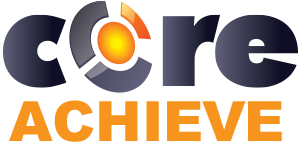The Why and How of Using Narration in eLearning Courses
February, 02 2023
Other posts:
Enhancing Team Dynamics for Effective Group Decision-Making with LMS Integration
Organizations increasingly rely on collaborative efforts to solve complex problems, innovate, and adapt to change, but how do we ensure that collaboration is happening.
Maximizing Small Business Potential with Training Technology
Training technologies can push small businesses ahead of their competitors, but what are the factors that go into choosing the right technology?
Unlocking Employee Potential: The Transformative Benefits of an Interactive Learning Management System (LMS)
Interactive training allows for unlocking employee potential, but how is it done?
Building a Robust Sales Pipeline with Training
Every organization wants a streamlined sales pipeline, but building one requires a series of interlocking activities with one of the most important being training.
Strategies for Adapting In-Person Training to Online Platforms
Online training is one of the most flexible ways of delivering training across organizations, but how do you even begin to adapt in-person training into online?
Using narration in your eLearning course can increase its effectiveness by 113%. But that increase is dependent on some other factors like, tone, microphone quality, and music. This is a complete list of all the things that you should watch out for.
Pictures and text are essential for the eLearning process, but how much sway does narration have? Short answer: quite a bit.
A study was conducted on the way information is delivered in online courses and the effect that it had on the participants. Narration with an animation showed to be 113% more effective than an animation just with text. However, just having narration isn’t the only thing—the way the narration is delivered also plays a role in effectiveness.
How should you deliver eLearning narration?
Conversational Tone: A narration with a conversational tone is shown to be more effective for learners than a stuffy, professional tone. So, be personable and relax with the jargoon—as long as you still get the point across.
Use a High-Quality Microphone: Obviously if you’re listening or recording a narration, you’ll want to pay attention the quality of the recording. Low-quality microphones often distort the voice while adding some background interference that can very easily be distracting.
Avoid Distracting Music: This follows the same logic as the microphone quality, too much background noise will deteriorate the impact as it actively draws attention away from the narration. However, music is a double-edged sword—no music and learners might get bored, too much and they’ll get distracted. You’ll have to use your own discretion, but definitely avoid anything with lyrics.
Synchronization: Narration is great for reinforcing what a learner is seeing, but this can only happen if the narration is properly synced to the information it is related to. Out-of-sync narration will be unpleasant, difficult to follow, and much less effective. Make sure the narration is complimenting what is happening on the screen.
Subtitles: Subtitles are a great way to reinforce the narration if they are properly synced. This allows the learner to digest the information twice: both visual and auditory. Plus, subtitles allow the learner to follow the narration without hearing.
Read from the Screen: Have you ever tried reading while lyrical music is playing? You must remember to keep the text on screen the same as the narration. If they are different, the learner will have to selectively chose which one to pay attention to. Naturally, this means that the text or narration information could be lost at any time.
Make a Script: This may seem like no-brainer advice but there are so many narrations that are clearly off-the-cuff, overflowing with filler words, and full of conflicting synonyms. The tone should be conversional, but you are still trying to get a point across.
Not Too Fast, Not Too Slow: Striking this balance may be difficult at first, but it is a necessity. If the narration is going too fast than it makes it more difficult to understand. While, if it is going too slow, the learner may get bored and allow their mind to wonder.
Narration, when done properly, can dramatically increase the effectiveness of a course. The leading theory for why this is goes beyond some people being visual learners and others being audio learners, rather, the visuals alongside the narration simulate both ears and eyes. Essentially, the audio reinforces the video and vice versa, making stronger connections.
Even if, for whatever reason, you didn’t care about making your training as effective as possible, narration will still elevate the learners’ experience (if you follow the list above).

Leave comment: